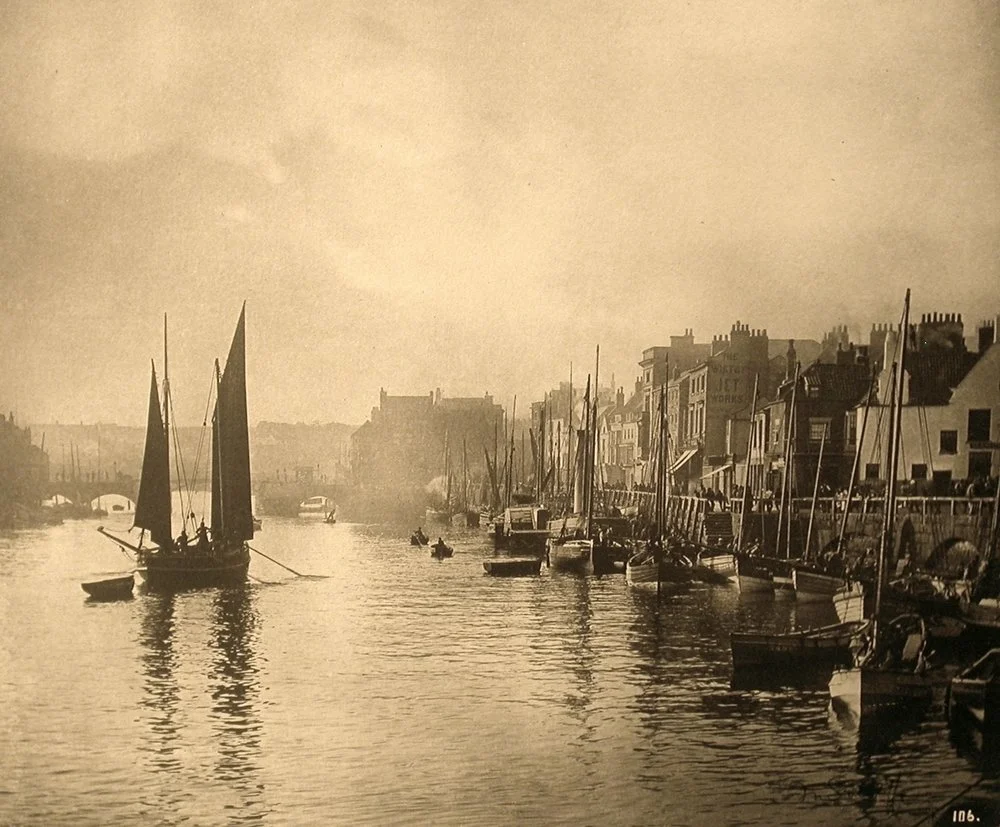Frank Meadow Sutcliffe
(BRITISH, 1853 - 1941)
Frank Meadow Sutcliffe was born in 1853 in Headingly, Leads, England. He became active in photography around 1870, and established a studio in the Yorkshire coastal town of Whitby, where he was very successful as a carte de visite and portrait photographer. He wrote extensively about photography and from 1908 until about 1930 had a column in the Yorkshire Weekly Post and contributed several other articles to magazines and newspapers, including Amateur Photography. Sutcliffe was a distinguished photographer of his day and was a founding member of The Linked Ring, as well as an Honorary Fellow of RPS. The first photographer to have a one-man show held by the Camera Club in 1888, his work was frequently exhibited and widely respected, as is demonstrated by the sixty-two medals he received throughout his lifetime. Sutcliffe experimented with many varieties of prints - albumen, silver, carbon and platinum - and in his later years also did experimental photography for Kodak, using their hand-held camera.
Although he was successful as a commercial photographer, Sutcliffe is best known for his personal landscape and genre prints, which he took in Whitby. He was influenced by P. H. Emerson and early realist French painters. Sutcliffe focused on the small-town inhabitants of Whitby - the fisherman, farmers, their wives and their children at work and at play. He is especially recognized as being able to capture people in a natural, unposed state despite the fact that the slow technique of wet plates that he often used made it difficult to do so. For further information on Sutcliffe see Frank Meadow Sutcliffe, published by Aperture with text by Michael Hiley.


